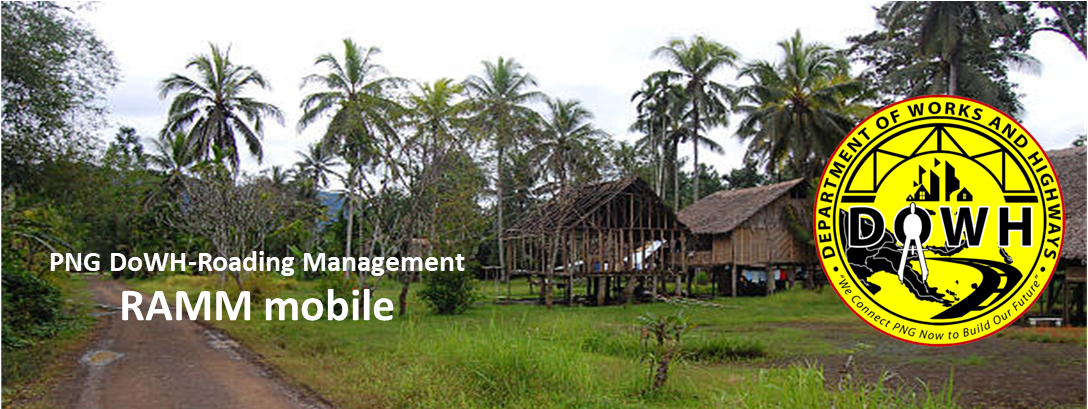
When you first open RAMM mobile you will see this log-in screen. Use the same log-in details as you would use for go.ramm.com. next you’ll be asked to select the database. Select Papua New Guinea

Next you will see the screen below. There are no layers currently active on the map. Click on settings in the top right corner.
In the settings menu there are two key areas- enabled groups and app settings. Enabled groups is where you turn on different asset layers so that they are visible on the main map. App settings is where you can change settings such as the base map layer, switch the test environment from alpha to beta or production mode (when production becomes available), change the theme colours to dark mode, turn on the secondary column for assets, update the map touch sensitivity and so forth. There will be more settings that become available as the beta environment gets updated and refined. Click on enabled groups.

To turn things off and on in RAMM mobile- you use the sliders shown on the far right next to assets. These sliders turn blue when a specific setting is activated and are greyed out when the setting is inactive. Click on the slider to activate the list of assets.
Once the asset list is activated, you can search as you normally would in RAMM. To load an example dataset search for bridges and Select DOWH bridges (temporary). Remember the slider color on the right will change to blue once activated.

Once you have DOWH bridges (temporary) loaded, load another example dataset by searching for linear reference point and then select linear reference point. 
The next example data layer to load is carriageway section. Search for carriageway and select carriageway section. Once carriageway section is loaded, click on show enabled table groups on the left.

When you select show enabled table groups the list view will change to only show asset types you have selected. Click on the back arrow on the top left to go back to the main settings menu.

Now that we have the correct asset layers showing on the map, next we want to change the base map. Select App settings.

We want to change the map source from mobile default- so select map source under maps

Select open street map and then select load open street map on the left. A pop up should appear saying open street map loaded. Once open street map is loaded- click on the back arrow to go back to the settings menu

Select the back arrow on the top left to go back to the main settings menu.

Select the back arrow on the top left to go back to the map view.

You will now be able to see assets selected on the map, the default setting is to have the map centred around your current location (in this case the blue dot hidden slightly under a linear reference point on Waigani Drive). The default setting is also to show the assets on the left hand side with a colour legend so you know what is displaying on the map in your area- you can turn asset layers on and off by clicking on the asset name (the sliders will change color from blue to grey).Another default setting is to display clusters of assets on the map unless you’re zoomed right in.
You can zoom in on the map using your fingers- have two fingers toughing the map and move your fingers apart to zoom in, and to zoom out move your two fingers apart anywhere on the map.

